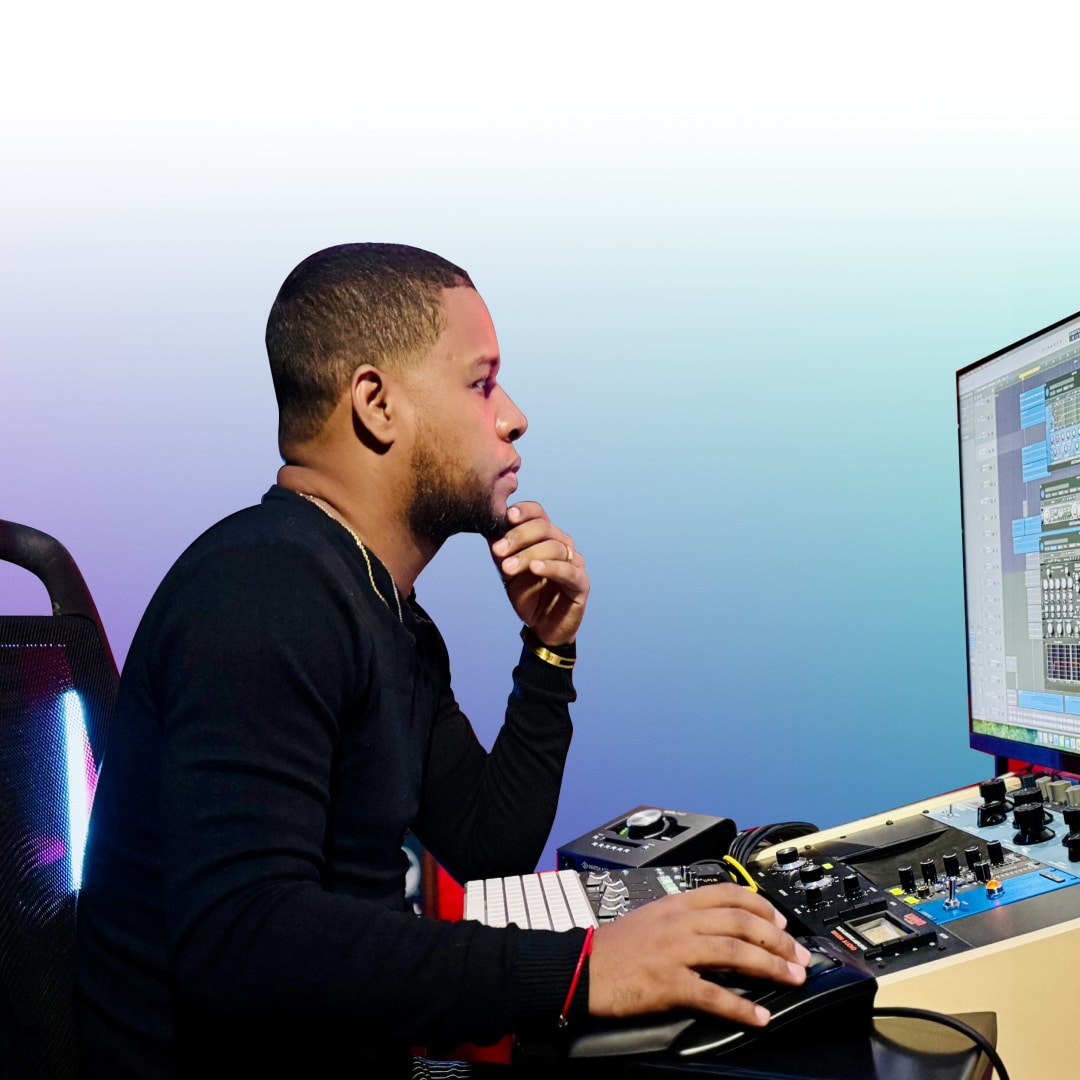Music aggregators play a crucial role in today’s music industry, serving as the bridge between artists and digital music platforms. Essentially, they collect and distribute music from independent artists and labels to online stores and streaming services. This process allows musicians to make their work available globally without needing to sign deals directly with each service. A digital aggregator music service handles not just the distribution but also the tedious aspects of digital rights and royalty management, making it simpler for artists to focus on their craft.
Role of Music Aggregators in the Music Industry
Acting as Intermediaries
They act as intermediaries by enabling artists to bypass traditional distribution channels that often require extensive networks and substantial financial resources. This intermediary role includes negotiating with digital platforms, and ensuring that music meets the specific format and quality standards required by these services. By doing so, aggregators facilitate a smoother entry into the market for artists of all backgrounds, significantly leveling the playing field in an industry that has been notoriously difficult to penetrate.
Distribution to Major Platforms
A pivotal role of music aggregators is to ensure that music is distributed to all major digital outlets. This includes a vast array of platforms, from well-known streaming services like Spotify and Apple Music to specialized stores catering to specific genres. Aggregators streamline this process by having existing agreements with these platforms, which allows them to distribute music swiftly and efficiently, ensuring artists’ work is available where listeners expect to find new music.
Streamlining Upload Processes
The process of uploading music can be complex and time-consuming, involving various technical specifications such as metadata and file formats. Music aggregators simplify this process by providing artists with a single portal through which they can manage their releases. This system often includes automated tools that help artists comply with different platform requirements, reducing the risk of errors and delays that could hinder the music’s release and availability.
Managing Metadata and Royalties
Handling metadata and tracking royalties are critical aspects managed by music distribution platforms. Metadata includes all the details about a track, such as the artist’s name, song title, and album name, which are essential for ensuring that music is searchable and correctly attributed. Furthermore, aggregators play a crucial role in monitoring streams and downloads to accurately calculate and distribute royalties to artists and rights holders. To sustain their musical careers and receive just rewards for their labor, artists must practice sound financial management.
Benefits of Using Music Aggregators
Global Audience Reach
One of the primary benefits of music aggregators is their ability to broaden an artist’s reach to a global audience. Without the geographical and financial constraints of traditional distribution, artists can now share their music with listeners around the world with just a few clicks. This global digital music distribution does not just extend an artist’s listener base; it also opens up opportunities for international collaborations, performances, and fan engagement, which are critical for building a global brand.
Efficient Royalty Payments
They also enhance the efficiency of royalty payments through their sophisticated tracking systems that monitor how and where music is being consumed. This capability ensures that artists are compensated accurately and promptly for the use of their work. As emphasized before, by handling these financial aspects, online music distribution platforms relieve artists of the need to manually track streams and sales, allowing them to focus more on creating music and less on administrative tasks.
Enhanced Promotion and Exposure
Besides distribution, many music aggregators offer promotional tools and services to help artists increase their visibility and reach. These may include features like playlist placements, which can significantly boost an artist’s exposure, or marketing campaigns that are specifically tailored to enhance the artist’s presence on various platforms. Such promotional support is crucial, especially for emerging artists who might not have the means to fund extensive marketing campaigns.
Types of Music Aggregators
Paid Music Aggregators
Paid music aggregators cater specifically to artists and record labels who are willing to invest financially in the distribution and management of their music. By charging subscription fees or taking a percentage of royalties, these aggregators provide a suite of professional-grade services that typically include personalized support and access to premium platforms. For artists aiming to expand their reach, these aggregators can offer targeted marketing strategies and promotional tools that help in navigating the complexities of the music industry. The investment in a paid service can be worthwhile for artists who are looking for comprehensive support and tools that can help maximize their music’s reach and revenue.
Free Music Aggregators
These aggregators provide a no-cost solution for artists looking to distribute their music without upfront expenses. Usually, these platforms typically operate on a revenue-sharing model, where they retain a portion of the income generated from streams and downloads. While they may offer fewer features than paid services, they are ideal for new artists or those who prefer to minimize their initial investment while still reaching major digital music platforms.
Selecting the Right Music Aggregator
Key Factors to Consider
The aggregator’s reputation for reliability is paramount. Artists should research the consistency of payouts, ensuring that the aggregator has a track record of timely and accurate financial dealings. This is vital because reliable payouts directly affect an artist’s revenue stream and financial planning. Additionally, the platform’s historical stability—whether it has experienced significant downtime or issues that could affect an artist’s ability to distribute their music—is also essential. Reviews and testimonials from other users can provide valuable insights into the aggregator’s operational reliability.

Finally, the level of customer service provided by the aggregator plays a critical role in the overall experience. Efficient, knowledgeable, and accessible customer support can make a significant difference, especially when artists encounter issues or have queries about their accounts. The ability to resolve problems swiftly ensures that digital-age music distribution proceeds smoothly without interruptions, which is crucial for maintaining an artist’s online presence and reputation. Moreover, some aggregators offer personalized support, which can be especially beneficial for emerging artists who may require more guidance in navigating the digital music landscape.
User Interface and Ease of Use
A well-designed user interface can significantly enhance the music distribution process for artists. A straightforward and intuitive interface ensures that artists can upload their tracks, manage their catalogs, and review their earnings with ease, reducing the time spent on administrative tasks. Here’s what to look for in an aggregator’s user interface:
- Clarity of Navigation: The user interface must be laid out in a manner that is easy to understand and navigate. The best interfaces are those where features and functions are logically organized, allowing artists to quickly find what they need without unnecessary clicks. For instance, key actions like uploading tracks, accessing financial statements, or viewing listener statistics should be straightforward to locate.
- Upload Simplicity: The process of uploading music should be as simple as possible to avoid taking up valuable creative time. This means that the platform should allow for batch uploads, easy metadata tagging, and a clear step-by-step guide through the upload process. A platform that simplifies these steps can significantly reduce the overhead for artists managing large catalogs or frequent new releases.
- Access to Analytics: Detailed analytics are invaluable as they provide insights into how music is performing across different markets and platforms. A robust aggregator should offer comprehensive analytics tools that help artists track listenership, revenue trends, and engagement metrics. This data is crucial for making informed decisions about promotions, tours, and even future releases.
- Help Resources: Adequate support is vital. Whether it’s through detailed guides, FAQs, or direct customer service options, having accessible help resources can greatly enhance the user experience. These resources should help solve common issues quickly and efficiently, allowing artists to spend more time creating and less time troubleshooting.
- Multi-Device Support: In today’s mobile-centric world, a music distribution platform must perform consistently across all devices. Whether the artist is updating their catalog on a desktop at home, checking earnings on a tablet, or viewing analytics on a smartphone, the experience should be seamless and consistent.
An artist’s productivity and contentment can be significantly impacted by a music distribution platform that offers an outstanding user interface. By focusing on these key areas, artists can choose a platform that not only meets their needs but also enhances their ability to succeed in a competitive industry.
Impact on Independent Artists
Maintaining Control Over Work
One of the most significant advantages for independent artists using music aggregators is maintaining control over their work. This control includes deciding where and when their music is released, setting their pricing, and designing marketing strategies that align with their artistic vision. Such autonomy empowers artists to shape their careers on their terms, allowing for a more personal and direct connection with their audience.
Navigating the Digital Marketplace
As the online music scene becomes more crowded, independent artists must employ effective tactics using music aggregators to make a significant impact. Below are strategies to help artists navigate these challenges:
- Strategic Release Timing: Timing is everything in the music industry. By planning your music releases around significant dates or cultural events, you can capitalize on increased online activity and interest. For instance, releasing a love song around Valentine’s Day or a patriotic tune near a national holiday can attract more listeners. This approach ensures that your music is relevant and has the potential to catch the eye of thematic playlists, enhancing your visibility and reach on digital platforms.
- Leverage Analytics: Analyzing which songs perform well and understanding demographic information about your listeners can help you tailor future releases and target your audience more effectively. For example, if data shows that your tracks are popular in a particular geographic area, you might focus your promotional efforts or tour planning to capitalize on that regional popularity. Employing these analytics allows you to make informed decisions that can amplify your music’s success.
- Engage with Fans: Building a direct connection with your audience is vital for sustaining a loyal fanbase. Utilize the interactive features provided by music platforms, such as commenting on tracks, sharing behind-the-scenes content, or hosting live Q&A sessions. This engagement helps to humanize your brand and creates a community around your music, encouraging fans to support you actively. Regular interaction not only keeps your existing audience engaged but also makes your profile more attractive to new listeners who value artist accessibility and transparency.
- Optimize Content: The presentation of your music is as important as the sound itself. Ensure that your songs are complemented by high-quality, visually appealing artwork and engaging music videos. These elements should reflect your artistic identity and resonate with your target audience, making your content more likely to be shared and remembered. Optimizing your visual content can significantly affect how your music is perceived and can make the difference between blending in and standing out on crowded digital platforms.
- Collaborate: Collaboration is a powerful tool for expanding your reach and refreshing your sound. Partnering with other artists or influencers, who bring their unique followers, can introduce your music to a broader audience. Collaborations can range from featuring another artist on your track to working with visual artists or dancers to create multimedia content that enhances your music’s appeal. These partnerships not only diversify your content but also provide opportunities for cross-promotion, multiplying your visibility across different audience segments.
Successfully navigating the digital marketplace involves more than just uploading your music and waiting for listeners to find it. Independent musicians can make use of the opportunities presented by the digital world to expand and connect by utilizing these tactics to optimize their presence and influence on music aggregators.
The music aggregators importance in the industry is poised to evolve even further as technology advances and consumer behaviors shift. We can anticipate more sophisticated features in analytics and user interface designs to make these platforms even more artist-friendly. As the global digital landscape becomes more competitive, aggregators might enhance their promotional and marketing tools to provide artists with even greater visibility and engagement opportunities. This ongoing evolution will likely continue to open new doors for artists, making it easier for them to share their music, connect with fans, and build successful careers.













